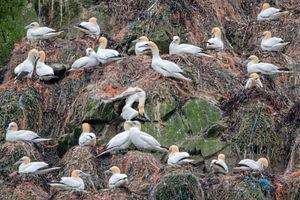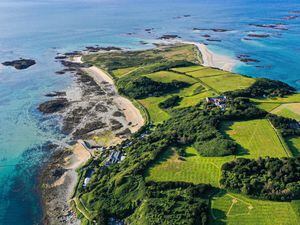Plastic ‘now present in almost all gannet nests in Alderney’
PLASTIC is now present in almost all gannet nests in Alderney.

The birds colonise Les Etacs and Ortac sea stacks from early February before leaving for their wintering grounds in the Mediterranean and West Africa in October.
There are about 8,800 breeding pairs of northern gannets, which make up just over 2% of the world population.
A review of the year by the Wildlife Trusts has found seahorses, little terns and crawfish are among the creatures making a comeback with the help of conservation action around the UK’s coasts.
But there are pressures.
On Alderney, plastic is now present in almost 100% of gannet nests, mostly from fishing industry rope or line, posing a significant risk to birds and chicks, the Wildlife Trusts said.
‘This review of sightings and action from across the UK has given a glimpse, a mere taster, of the wonders of our marine wildlife – delightful species that everyone has the opportunity to encounter and learn more about,’ said Lissa Batey, senior living seas officer at The Wildlife Trusts.
‘But it has also shown us the problems that remain and the challenges that our sea life faces. It’s not too late.
‘We are already seeing recovery in some of our Marine Protected Areas, but we don’t yet have a fully functioning network of nature reserves at sea, where wildlife has the opportunity to thrive.’
Several trusts reported that it has been a bumper year for nudibranch, or sea slugs, a good autumn for sightings of curled octopus by divers, and basking sharks were seen in Cardigan Bay for the first time in three years.
From February, gannets begin to find their partners and eventually start building or rebuilding their nests.
Older, more experienced pairs get better nest spots at the top of the colony.





